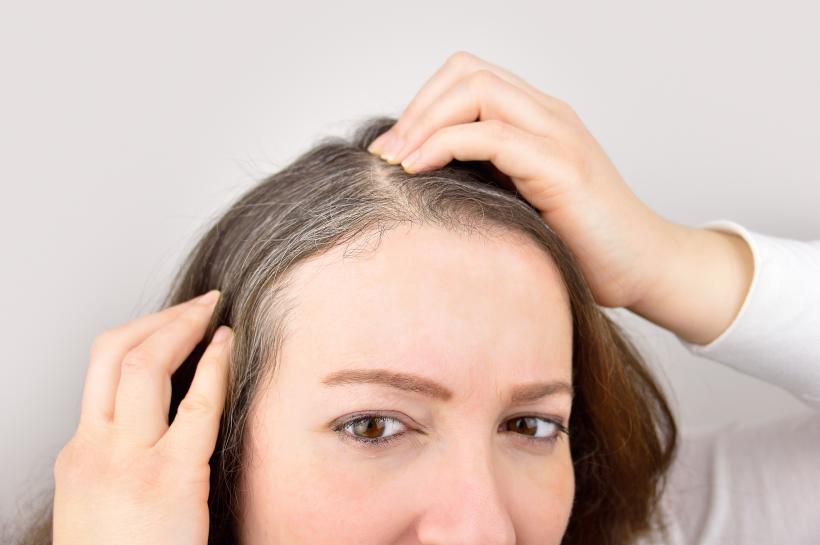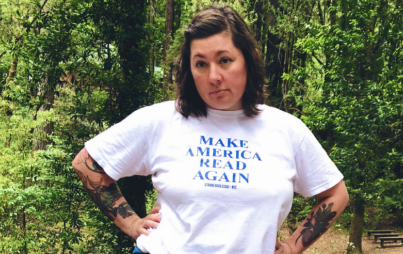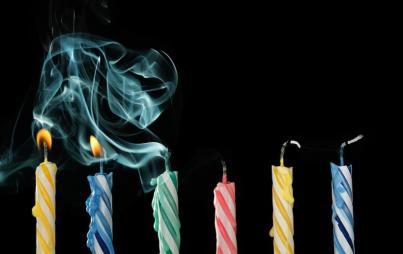
I’m beginning to have mixed feelings about coloring my hair.
As I approach my 40th birthday, I’ve observed an interesting trend among women my age and older: patches of gray or white hair are nowhere to be found. My maternal grandmother had gorgeous, snow-white hair — but now, the sight of an older woman with silver or white hair is a rarity. I know it’s not because all of us happen to be genetically blessed.
How did we get here?
In the 1940s and 1950s, Clairol promoted its hair color products to women by appealing to our fear of aging. Gray hair, the ads proclaimed, “could be ‘the ruination of romance,’ and leave a woman ‘buried beneath…dull, drab color.’” In 2016, America nearly witnessed the election of its first female president to the White House. The fact that Hillary Clinton was a serious contender for the presidency had little to do with her hair, and everything to do with her ability to convince voters she had the knowledge, intellect, and decisiveness to handle the job. But Clinton herself has admitted that she spends significant time and money ensuring her hair is meticulously coiffed.
Despite the milestones women have reached in recent years, for many of us, success and confidence are still closely intertwined with a youthful appearance. Clairol’s ad campaigns have changed since the last century, but coloring gray or white hairs remains an important ritual for millions of women.
I should know. I’m one of them.
But for the first time, I’m beginning to have mixed feelings about coloring my hair.
There is a distinct moment in each woman’s life when gray hair and the associated reality of aging make its first unwelcome appearance. When I was 29 years old, I went to the office one day with my hair in a ponytail. A co-worker smiled and said teasingly, “Look, I can see a gray hair!” Horrified, I immediately plucked it out, ignoring a second co-worker who warned me, “Tweeze one gray hair, and three more come to its funeral!”
When I asked my eight-year-old daughter why she thought women colored their hair, she replied, “Because they don’t want to be called old ladies.” After scouring the Internet for flattering nicknames to describe older women, I noticed the term “silver vixen” on occasion. But we don’t hear this admiring term nearly as much as the more popular expression, “cougar,” which often has negative connotations of desperate older women hanging around bars in an attempt to attract younger men.
You Might Also Like: Life As A 39-Year-Old With Fully Gray Hair
While gray hair has gained more popularity recently, with some women deliberately dyeing their tresses to achieve a metallic look, so far its acceptability is limited to relatively exclusive social circles – namely women who are celebrities, young, or both. Diane Keaton, Rihanna, and young beauty bloggers can pull off the silvery, mermaid-inspired trend, but I’m not convinced the rest of us would get the same positive reception. Unless you’re famous or still getting carded at the grocery store, having gray or white hair can feel like a lose-lose situation. If we decide to color our hair, we’re complicit in indulging an unrealistic societal preference that we hide any signs of aging. If we let our gray hairs grow in freely, we might be called bold and brave at best, but also risk being perceived as unkempt, insignificant, and drab.
Although the cultural expectation that women maintain a youthful appearance hasn’t changed, I’ve noticed a shift in my feelings over the years. The 20-something me couldn’t understand why anyone younger than my grandmother would choose to let her gray or white hair show rather than coloring it. By contrast, the 39-year-old me feels increasingly bothered by how rarely I see naturally aging hair in my peers. It’s as if gray-haired women have become an endangered species. And this is a shame, because I’m starting to warm up to the idea that aging hair can be beautiful.
The other day, I was meeting a friend for coffee. Running late, I threw my hair into a ponytail, forgetting to strategically hide the tuft of gray hair that grows, weed-like, near my right temple. “Your hair looks cool that way,” my friend commented as I sat down.
While I haven’t canceled my next coloring session just yet, I no longer bother parting my hair to conceal those silvery strands.
I can’t control what others might think about my aging hair, but I can check in with myself from time to time and make sure that if I choose to continue coloring my hair, I’m doing so for the right reasons — my reasons, whatever they may be. For example, freshly styled and colored tresses can be an adventure in their own right, one that has nothing to do with chasing the proverbial fountain of youth. Before my mother had chemotherapy, her hair was curly and brown; after treatment, it grew back spiky and white. She decided to dye it blond — not to look younger but to see if blond women have more fun. Similarly, coloring my hair doesn’t have to be about covering something up. Coloring my hair can be a form of self-care, a part of my identity, and a way to express myself.
As I look ahead to the next decade, I know that whether my hair is colored or au naturel doesn’t matter. What’s most important is making the choice that’s right for me.








